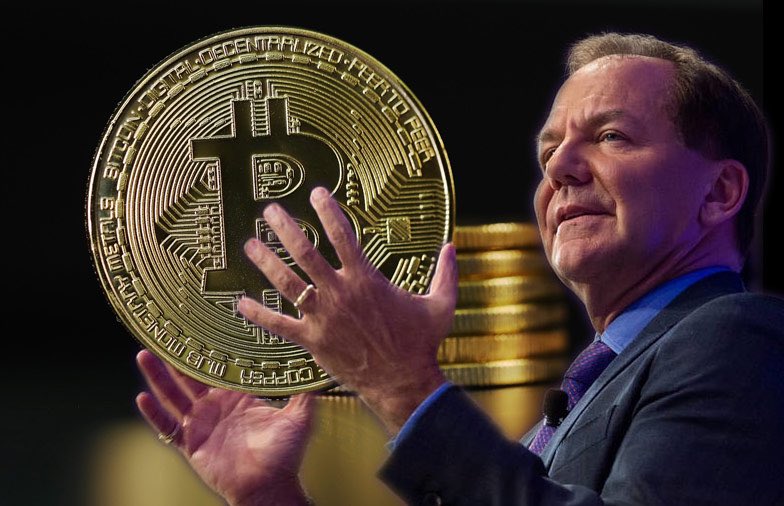
What really causes inflation? 🧵
[a thread for normies - like me]
[a thread for normies - like me]
2/ The problem with #inflation is that it's a very personal experience.
As I always say, the wallet is the most sensitive organ in the body, so my inflation might not be your inflation.
In fact, my inflation could be seen as #disinflation by you... (more on that later)
As I always say, the wallet is the most sensitive organ in the body, so my inflation might not be your inflation.
In fact, my inflation could be seen as #disinflation by you... (more on that later)
3/ Price inflation and monetary inflation have different definitions:
* For many.- #inflation is the increased prices paid for goods & services.
** To others.- it's a decline in the purchasing power of your #money.
*** In layman's terms.- Too much money chasing too few goods.
* For many.- #inflation is the increased prices paid for goods & services.
** To others.- it's a decline in the purchasing power of your #money.
*** In layman's terms.- Too much money chasing too few goods.

4/ What's certain is that during inflationary times, price levels are rising over a certain amount of time.
Over what time period though, a year or a decade? You may ask.
For that, we have Rising and Falling #inflation...
Over what time period though, a year or a decade? You may ask.
For that, we have Rising and Falling #inflation...
5/ Rising #Inflation: Rising prices by 10% in one month and then 11% in month two.
Falling Inflation: Prices are rising by 10% in one month and then 9% in month two.
Falling inflation = #disinflation. However, lately, this has meant persistently low levels of inflation...
Falling Inflation: Prices are rising by 10% in one month and then 9% in month two.
Falling inflation = #disinflation. However, lately, this has meant persistently low levels of inflation...
6/ Predicting inflation is almost impossible, even for #CentralBanks with huge resources at their disposal.
Nowadays, we see how hard it is for them to predict #inflation just 1 or 2 years ahead. And obviously, this is worsened by a very unstable #Fed with its #monetarypolicy...
Nowadays, we see how hard it is for them to predict #inflation just 1 or 2 years ahead. And obviously, this is worsened by a very unstable #Fed with its #monetarypolicy...

7/ When you hear "#inflation is coming", you should ask what level & for how long.
i.e. 0.1% annual price rise is still inflation but not a big one. Now, is 2% or 3% a lot or little inflation?
Context matters!
Your answer will be shaped by your previous experience...
i.e. 0.1% annual price rise is still inflation but not a big one. Now, is 2% or 3% a lot or little inflation?
Context matters!
Your answer will be shaped by your previous experience...
8/ In that sense, there can be good and bad #inflation.
If an economy has low inflation of 1% then a rise to 2-3% may be a good thing.
And a rise to 10% might be bad because Inflation & its expectations will impact #interestrates & #yields...
If an economy has low inflation of 1% then a rise to 2-3% may be a good thing.
And a rise to 10% might be bad because Inflation & its expectations will impact #interestrates & #yields...
9/ #Inflation & its expectations impact individuals, corporations, and countries' ability to pay their debts
So, #debt levels matter when considering if inflation at a certain % is good or bad
& as if this wasn't confusing enough, we haven't considered #wages in the equation...
So, #debt levels matter when considering if inflation at a certain % is good or bad
& as if this wasn't confusing enough, we haven't considered #wages in the equation...

10/ We need to consider if #inflation in goods & services is offset by a rise in #wages.
If prices are rising by 5% but your wages are rising by 10%, you're fine and not complaining too much about it...
If prices are rising by 5% but your wages are rising by 10%, you're fine and not complaining too much about it...

11/ At the beginning, I noted there're different types of #inflation that impact us differently.
For the #Fed: They use Personal Consumption Expenditures #PCE as their measure of inflation within their calculations of #GDP.
For the average Joe/Jane: Consumer Price Index #CPI
For the #Fed: They use Personal Consumption Expenditures #PCE as their measure of inflation within their calculations of #GDP.
For the average Joe/Jane: Consumer Price Index #CPI
12/ However, there's a caveat!
If #CPI is to be believed, US #inflation has rarely been above 3% during the last 30 years 😂
It's based on a #goods basket that changes over time by the Govt. So we never really compare apples to apples.
This leads to manipulation accusations...
If #CPI is to be believed, US #inflation has rarely been above 3% during the last 30 years 😂
It's based on a #goods basket that changes over time by the Govt. So we never really compare apples to apples.
This leads to manipulation accusations...

13/ A further issue is that #CPI is measured differently in every country
Some people can experience high #inflation in education, housing, or healthcare costs, whereas others could experience deflation in finished goods, with prices falling due to globalization or technology...
Some people can experience high #inflation in education, housing, or healthcare costs, whereas others could experience deflation in finished goods, with prices falling due to globalization or technology...
14/ #Deflation is the opposite of #inflation, where there's a decrease in general price levels in an economy.
Speaking of deflation, .@RealVision just SLASHED the price of its Essential Membership to $99/year- which is less than a craft beer a month 🍻 rvtv.io/3DWdHum
Speaking of deflation, .@RealVision just SLASHED the price of its Essential Membership to $99/year- which is less than a craft beer a month 🍻 rvtv.io/3DWdHum
15/ #Commodities play a key role in many measures of #inflation, like the Producer Price Index #PPI.
It's more volatile than #CPI, but producers can smooth out those fluctuations for end users.
A reduced-size food item is a sign of inflating input costs- #shrinkflation...
It's more volatile than #CPI, but producers can smooth out those fluctuations for end users.
A reduced-size food item is a sign of inflating input costs- #shrinkflation...

16/ Another #inflation type is asset price inflation.
During the last decade, the US #equitymarkets have hit record levels despite sluggish economic growth and flat #profits...
During the last decade, the US #equitymarkets have hit record levels despite sluggish economic growth and flat #profits...

17/ One of the types of inflation we all hope for (but rarely get) is wage inflation, where our #wages are rising faster than the rise in the price of goods & services.
Even the #Fed discarded the Employment Cost Index #ECI once they realized wage #inflation was not happening...
Even the #Fed discarded the Employment Cost Index #ECI once they realized wage #inflation was not happening...
18/ So, what causes #inflation?
Money supply increase: Its impact will depend on what people do with it- consume/invest/pay off debt
Safe-haven assets: You may see inflation in gold, but there won't be more consumption if that currency goes to unproductive means- share buybacks
Money supply increase: Its impact will depend on what people do with it- consume/invest/pay off debt
Safe-haven assets: You may see inflation in gold, but there won't be more consumption if that currency goes to unproductive means- share buybacks
19/ #Money printing should devalue a currency but if every country is debasing its currency, there's a stalemate in a race to the bottom.
If a solitary country has a weaker currency over a long period of time, that'll push up the price of imported goods, creating #inflation...
If a solitary country has a weaker currency over a long period of time, that'll push up the price of imported goods, creating #inflation...
20/ Pandemic: We've seen #supplychain bottlenecks creating higher prices + heavy stimulus by the govt
Pre 2020, the swine flu decimated Chinese livestock, causing an extreme spike in pork #CPI
Demographics: global population growth peaked in the 70s = high #inflation decade...
Pre 2020, the swine flu decimated Chinese livestock, causing an extreme spike in pork #CPI
Demographics: global population growth peaked in the 70s = high #inflation decade...
21/ Monetary Policy: For risk assets, it's not what the market thinks but what the policymakers will do, and there is no set policy response.
Volcker used high rates in the 80s, but since the 2008 crisis, #CentralBanks have been trying to stimulate inflation- economic growth-...
Volcker used high rates in the 80s, but since the 2008 crisis, #CentralBanks have been trying to stimulate inflation- economic growth-...

22/ Yet, that ultra-loose #monetarypolicy has failed, creating asset price inflation, inequality inflation, but very little true economic #inflation.
It's the turn of #fiscalpolicy- government spending- to succeed where central bankers failed...
It's the turn of #fiscalpolicy- government spending- to succeed where central bankers failed...
23/ Be aware of what the market thinks because #inflation expectations can move higher even if actual inflation is not moving, impacting asset prices:
- Oil: Future expectations & current inflation levels in the US have a relationship with changes in #oilprice
- Bond #yields
- Oil: Future expectations & current inflation levels in the US have a relationship with changes in #oilprice
- Bond #yields

24/ For policymakers, price stability is the holy grail & yet they don't know which inflation level is correct for our #economy with so many competing forces
As #investors, focus on (NFA):
#Markets signals
#Commodity prices
#Debt levels
#Yields rate changes & interest rates
As #investors, focus on (NFA):
#Markets signals
#Commodity prices
#Debt levels
#Yields rate changes & interest rates
That's a wrap! If you enjoyed this thread:
1 RT the first tweet (reposted 👇 for your convenience)
2 Follow @PaulGrra for more
Special thanks to .@RealVision for keeping me up to speed with everything happening in the markets in times like these!
1 RT the first tweet (reposted 👇 for your convenience)
2 Follow @PaulGrra for more
Special thanks to .@RealVision for keeping me up to speed with everything happening in the markets in times like these!
https://twitter.com/paulgrra/status/1574853689981882370?s=46&t=09bvZdUxMLLHjZWb3HS6_A
• • •
Missing some Tweet in this thread? You can try to
force a refresh












